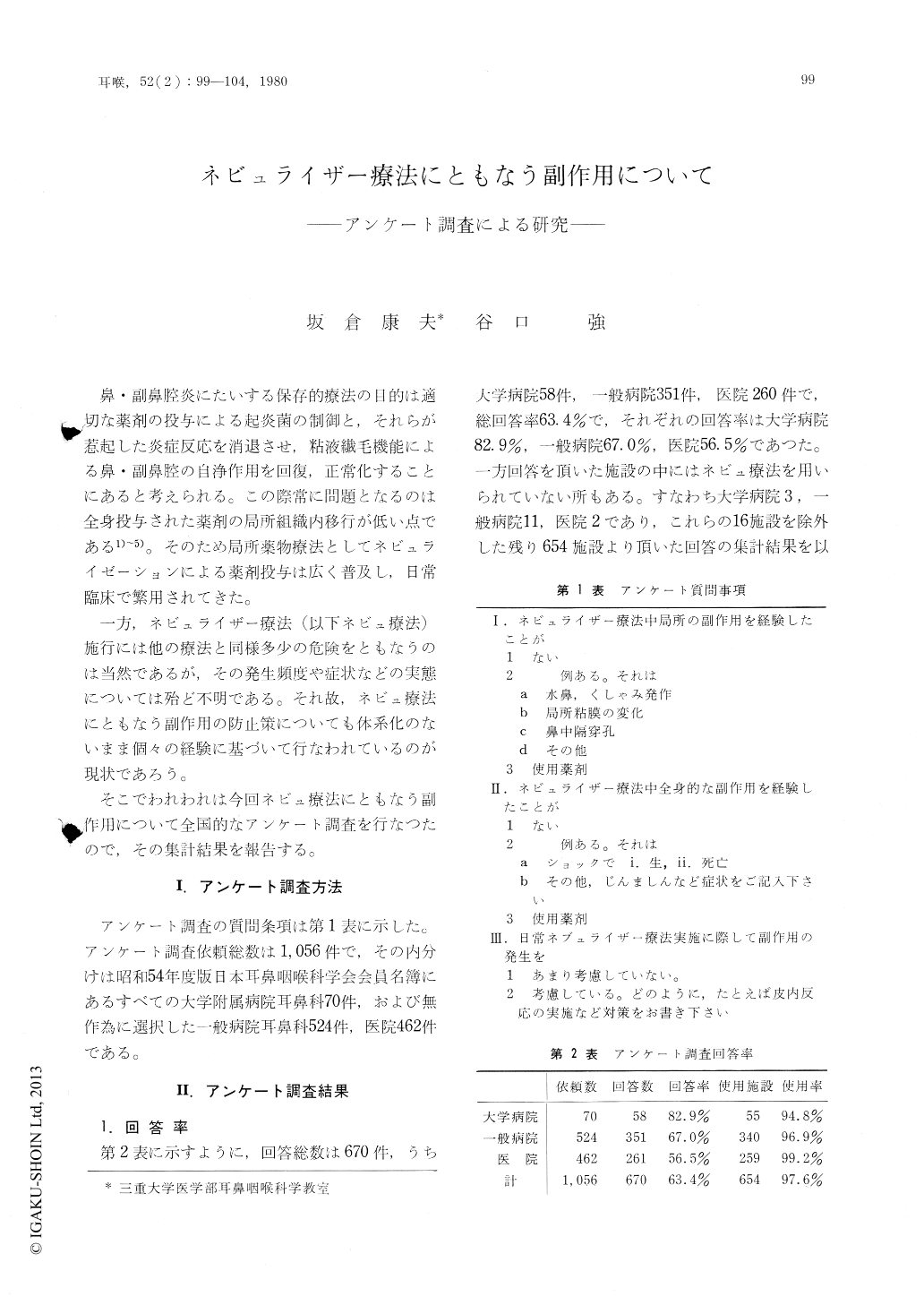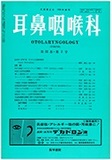Japanese
English
- 有料閲覧
- Abstract 文献概要
- 1ページ目 Look Inside
鼻・副鼻腔炎にたいする保存的療法の目的は適切な薬剤の投与による起炎菌の制御と,それらが惹起した炎症反応を消退させ,粘液繊毛機能による鼻・副鼻腔の自浄作用を回復,正常化することにあると考えられる。この際常に問題となるのは全身投与された薬剤の局所組織内移行が低い点である1)〜5)。そのため局所薬物療法としてネビュライゼーションによる薬剤投与は広く普及し,日常臨床で繁用されてきた。
一方,ネビュライザー療法(以下ネビュ療法)施行には他の療法と同様多少の危険をともなうのは当然であるが,その発生頻度や症状などの実態については殆ど不明である。それ故,ネビュ療法にともなう副作用の防止策についても体系化のないまま個々の経験に基づいて行なわれているのが現状であろう。
Adverse effect associated with nebulizer therapy was studied using questionnaires which were sent to 1056 institutions, and were answered in 63.4%. Adverse effect in the nose was experienced in 41.2% of the institutions. Seventy three percent of these symptoms were sneezing, nasal obstruction and watery discharge. Systemic effect was encountered in 32% of institutions. The averaged case of adverse effects was 1.8 in one institution. Anaphylactic shock and respiratory distress were found in 62.3% of the case showing the systemic side effects. Streptomycin and penicillin were though to be etiologic agents for 70% of the cases of shock and respiratory distress.

Copyright © 1980, Igaku-Shoin Ltd. All rights reserved.


